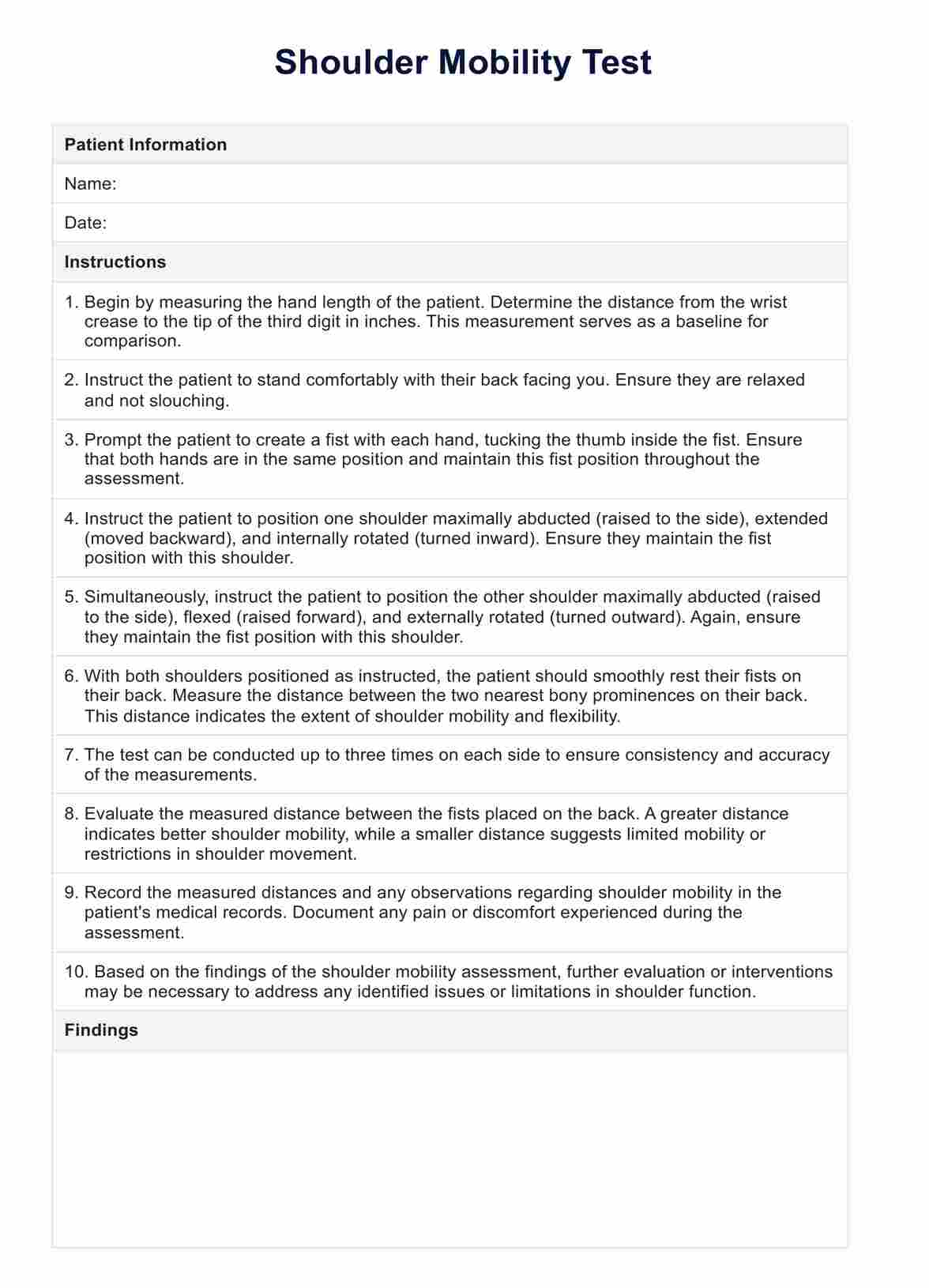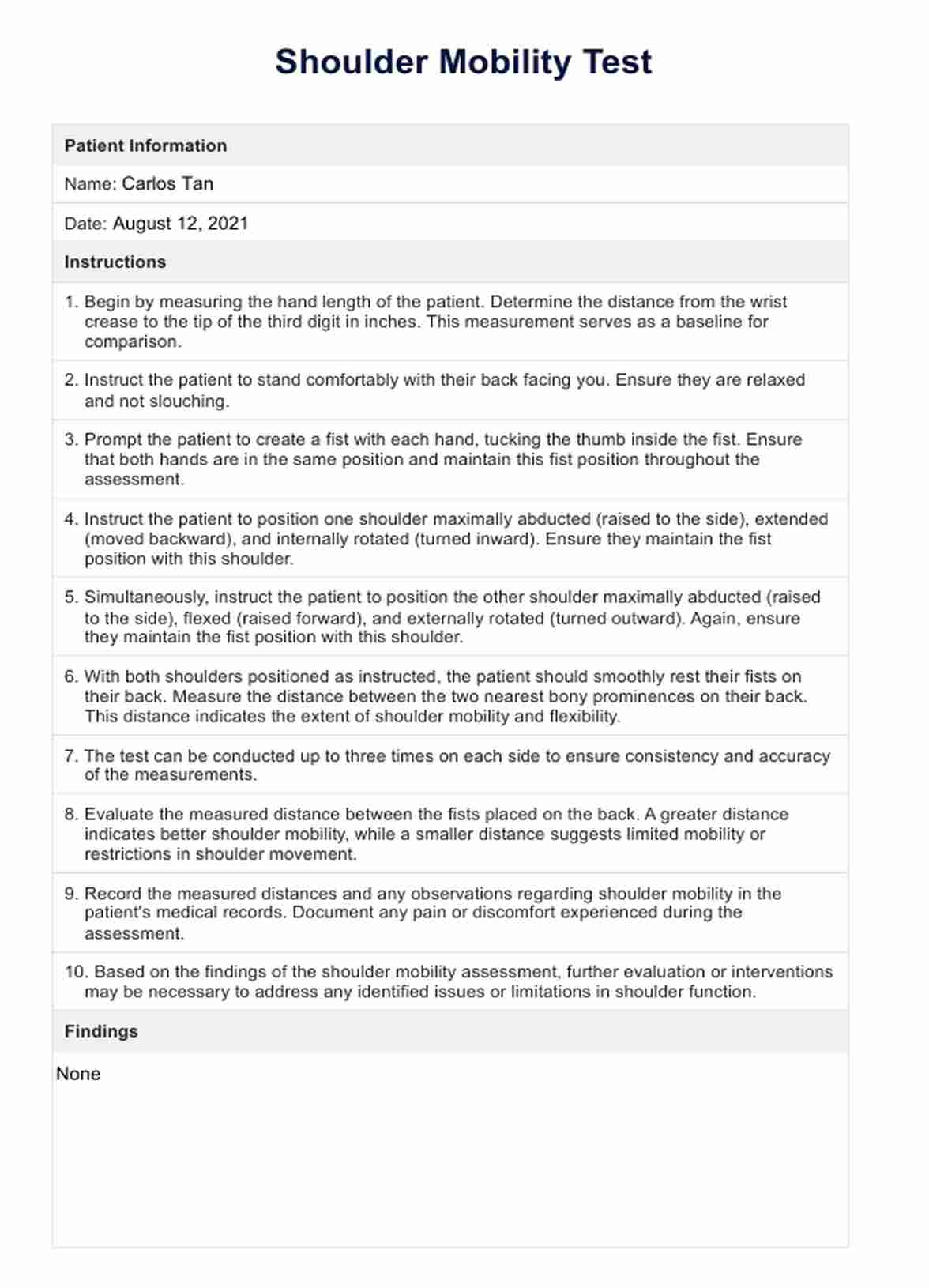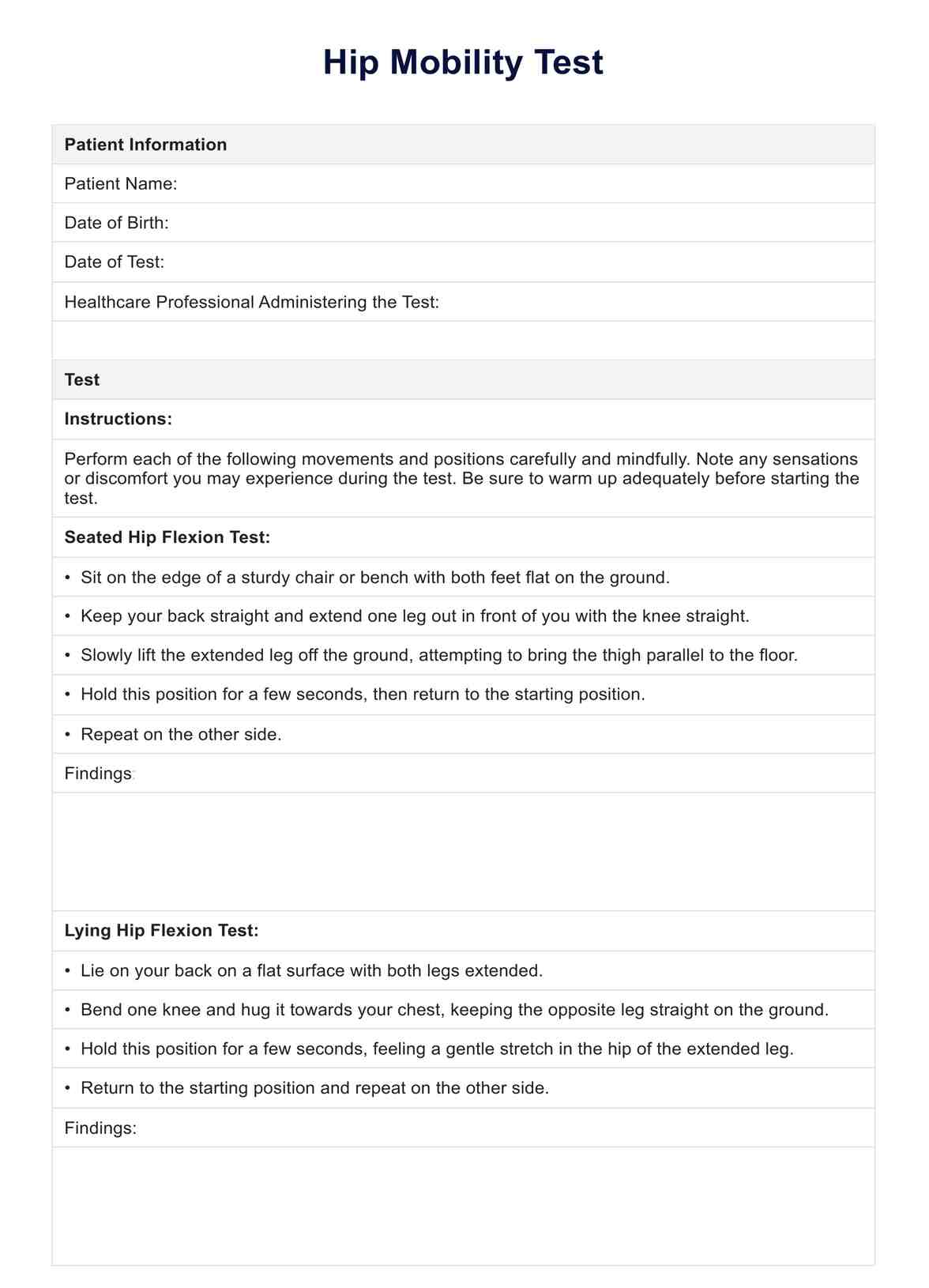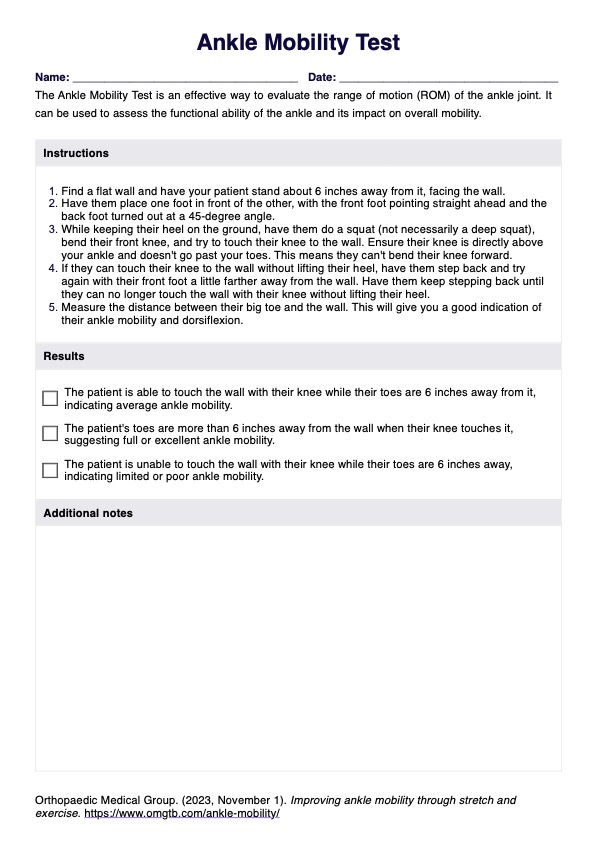Shoulder Mobility Test
Get access to a free Shoulder Mobility Test PDF. Learn how to assess your patient's shoulder mobility and streamline your clinical documentation.


Understanding shoulder mobility
Shoulder mobility describes the range of motion and flexibility in your shoulder joint. It is an important aspect of overall physical health, athletic performance, and daily activities such as reaching, lifting, and carrying. Good shoulder mobility allows for smooth and pain-free movements while also reducing the risk of injury.
Good shoulder mobility can prevent and alleviate common issues such as shoulder pain, stiffness, and limited range of motion. Various factors, including a sedentary lifestyle, poor posture, muscle imbalances, and injury can cause these problems.
Shoulder mobility is influenced by the anatomy and structure of the shoulder joint, which is made up of three bones: the humerus (upper arm bone), scapula (shoulder blade), and clavicle (collarbone). These bones are connected by ligaments, tendons, and muscles that work together to support the joint and allow movement.
In addition, shoulder mobility is affected by surrounding shoulder muscles such as the rotator cuff muscles, deltoids, and pectorals. These muscles play a crucial role in stabilizing and moving the shoulder joint, and any tightness or weakness in these muscles can impact shoulder mobility.
Shoulder Mobility Test Template
Shoulder Mobility Test Example
What is the Shoulder Mobility Test?
The Shoulder Mobility Test examines the range of motion in both shoulders, examining internal rotation with adduction in one shoulder and external rotation with abduction in the other. This evaluation also necessitates normal mobility in the scapula and extension in the thoracic spine.
To assess shoulder mobility using this task, the examiner measures hand length by determining the distance from the wrist crease to the tip of the third digit in inches as a starting position. The patient is then prompted to create a fist with each hand, tucking the thumb inside. Subsequently, they are instructed to place one shoulder maximally abducted, extended, and internally rotated, while positioning the other shoulder maximally abducted, flexed, and externally rotated.
The hands should maintain a fist position throughout the assessment and be smoothly rested on the back. The examiner measures the distance between the two nearest bony prominences. The test can be conducted up to three times on each side.
This shoulder movement evaluation offers valuable insights into potential shoulder pain, movement restrictions, and challenges in daily activities and functional movements. Quantitatively measuring the distance between fists placed on the back effectively evaluates the shoulder's capacity to execute these intricate motion patterns.
Interpreting Shoulder Mobility Test results
The functional movement screen results vary based on the individual's hand length and ability to achieve the required positions. An adequate range for combined shoulder mobility is considered when the distance between fists is 2 inches or less.
A distance greater than 2 inches indicates a restricted range of motion in either one or both shoulders. This could be due to various factors such as shoulder injuries, muscle imbalances, or joint stiffness. It is recommended to consult a healthcare professional for further evaluation and treatment.
On the other hand, if the distance falls below 2 inches, it may indicate hypermobility in the affected or opposite shoulder. While this may seem like an advantage at first, excessive mobility can lead to instability and increased risk of injury. In such cases, strengthening exercises and proper technique should be emphasized to prevent future problems.
It is important to note that the Shoulder Mobility Test should not be used as a standalone diagnostic tool, but rather as an initial screening for potential shoulder issues. It is always best to consult a healthcare professional for a proper diagnosis and treatment plan.
Also, utilizing the functional movement screen template can greatly enhance your practice by offering a structured approach to evaluating movement patterns. This template helps identify functional limitations and asymmetries, which are crucial for developing effective treatment plans. Implementing the FMS can improve client outcomes by targeting specific areas of weakness or dysfunction.
Benefits of using our free Shoulder Mobility Test template
Careparon's printable Shoulder Mobility Test template allows you to easily and accurately measure your patient's shoulder mobility. Here are some of its other advantages:
Evidence-based
Our test is based on the Functional Movement Screening: The Use Of Fundamental Movements As An Assessment Of Function‐Part 2 by Cook and colleagues (2014). It follows a standardized protocol, ensuring the accuracy and reliability of results.
100% digital
Our template is completely digital, saving you time and resources. There is no need for pen and paper; you can record your patients' results directly on your electronic device.
Customizable
You can customize the template according to your specific needs, such as adding your logo or clinic information. This allows for a more professional appearance and personalized touch for your patients.
Saves time
Our template's standardized protocol allows for quick and efficient testing, saving you and your patients valuable time. Additionally, the digital format eliminates the need for manual data entry, making the process even faster.
Reference
Cook, G., Burton, L., Hoogenboom, B. J., & Voight, M. (2014). Functional movement screening: the use of fundamental movements as an assessment of function-part 2. International Journal of Sports Physical Therapy, 9(4), 549–563. https://www.ncbi.nlm.nih.gov/pmc/articles/PMC4127517/
Commonly asked questions
To enhance shoulder mobility, particularly for internal and external rotation, it is beneficial to incorporate specific exercises that target the rotator cuff and surrounding shoulder muscles. Such exercises include internal and external rotation with resistance bands, shoulder blade squeezes, and arm circles.
Yes, poor posture can directly impact shoulder mobility. Slouching or hunching forward can cause tightness in the chest muscles, leading to rounded shoulders and limited range of motion. Poor posture also affects the muscles that stabilize the shoulder blades, making them less efficient in supporting the shoulder joint. This can result in decreased shoulder mobility and increased risk of injury.
Apart from using the Shoulder Mobility Test, other signs that may indicate shoulder mobility issues include pain or discomfort in the shoulders during daily activities and sports, difficulty performing overhead movements, and a limited range of motion in the shoulders.













































































































